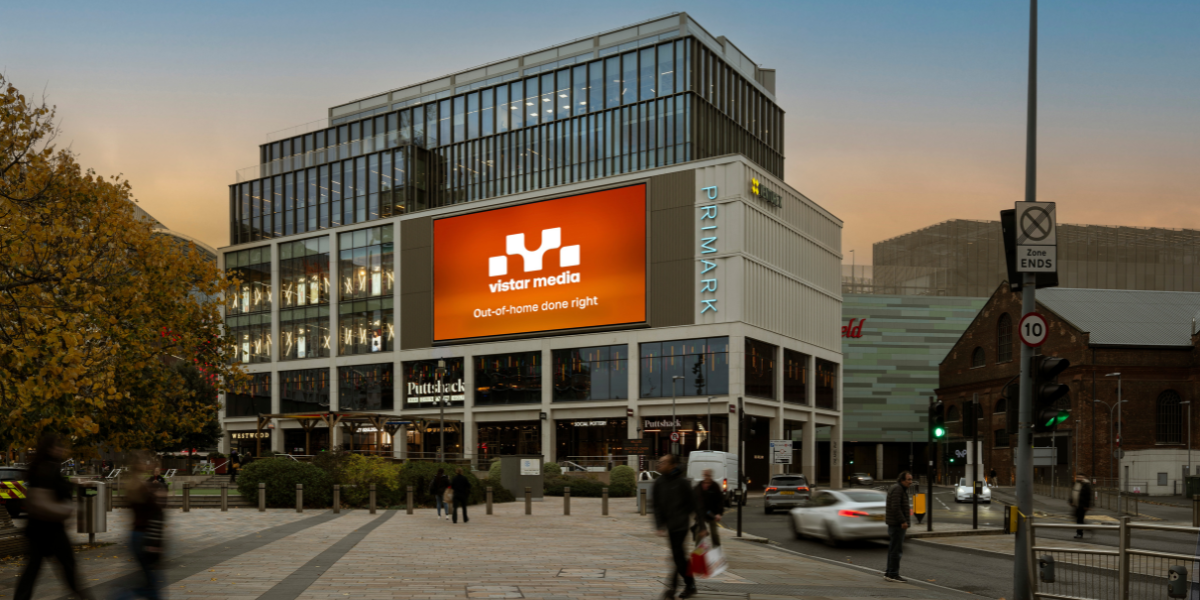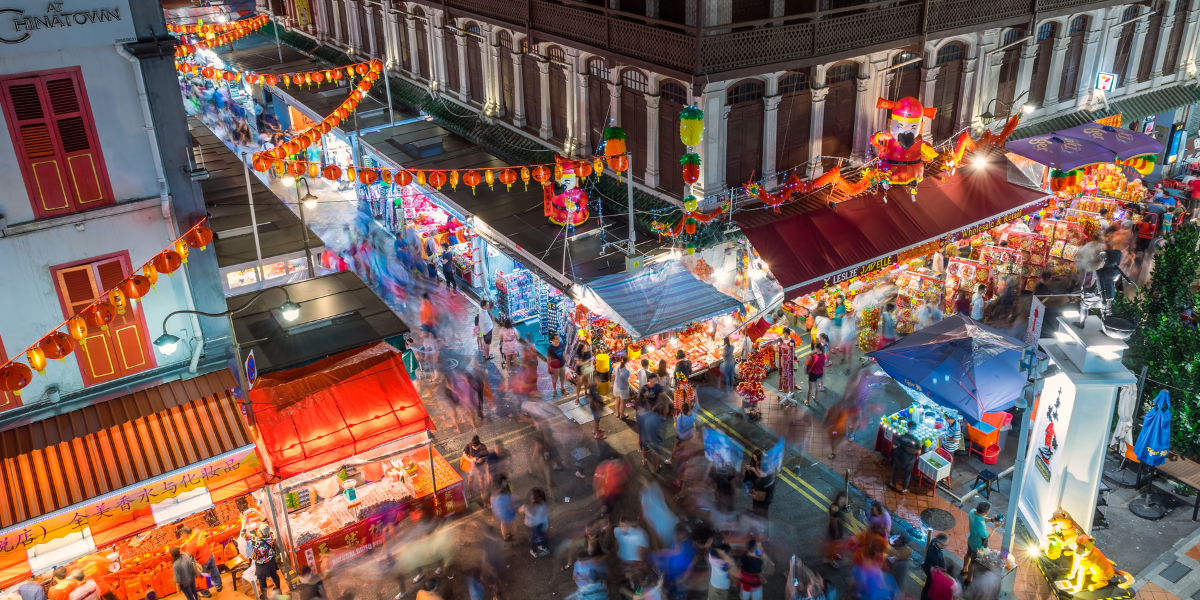
Out-of-home (OOH) advertising has long been a trusted channel for brand visibility. But as consumer behavior changes and marketing becomes increasingly data-driven, advertisers are looking for more control, better targeting and measurable results. That’s where programmatic digital out-of-home (DOOH) comes in.
If you're new to programmatic or just want to better understand how it works in the OOH space, this guide breaks down the process, benefits and how brands like yours can get started.
What is programmatic DOOH advertising?
Programmatic DOOH is the automated buying, selling and delivery of digital out-of-home advertising. It allows advertisers to purchase media placements on digital screens such as billboards, transit shelters, airports, gyms, urban panels and more using real-time data and technology.
Instead of negotiating manually with media owners and locking into static placements, programmatic DOOH lets you:
- Target specific audiences
- Adjust messaging dynamically based on data or location
- Optimize budget in real time
- Measure performance with transparency
It’s everything brands love about programmatic digital ads just brought into the real world.
How programmatic DOOH works
While the physical nature of OOH ads stays the same, the way ads are bought and delivered changes significantly through programmatic technology. Here's a simplified breakdown of the key components:
1. Demand-side platform (DSP)
A DSP is the tool advertisers use to plan, buy and manage their programmatic campaigns. In the context of DOOH, DSPs like Vistar Media’s platform allow brands to:
- Define campaign objectives and targeting
- Select preferred screen types and locations
- Upload creative assets
- Monitor real-time performance
2. Supply-side platform (SSP)
The SSP is used by media owners (e.g., billboard companies, retail screen networks) to make their digital inventory available. The SSP connects with the DSP, offering advertisers access to thousands of screens in multiple environments.
3. Real-time bidding or direct deal
Some DOOH inventory is transacted through real-time bidding, where advertisers bid to serve their ad when the criteria are met (such as time of day, audience presence or weather). Other campaigns use programmatic guaranteed deals, offering reserved space with programmatic flexibility.
4. Ad server & CMS
Once an ad is purchased, the creative is delivered to the appropriate media owner's screen via their ad server or digital signage player, which manages when and where the content plays.
What makes programmatic DOOH different from traditional OOH buying?
Traditional OOH buying typically excels in:
- Being cost-effective for long-term campaigns
- Consistent exposure
- No ad-skipping
- Streamlined planning (software like Adstruc simplifies static OOH)
In contrast, programmatic DOOH offers:
- Flexible scheduling (ads can be paused, adjusted or rotated)
- Precise targeting (by audience, behavior, location or context)
- Efficient buying (multiple media owners accessed through one platform)
- Measurable outcomes (via impression tracking and performance metrics)
This level of agility makes DOOH campaigns easier to scale and adapt, especially across multiple markets.
Benefits of programmatic DOOH advertising
Here’s why more advertisers are making programmatic DOOH a core part of their media mix:
1. Smarter audience targeting
Rather than selecting screen locations manually, you can target based on:
- Demographic data (age, income, gender)
- Behavioral data (purchase intent, brand affinity)
- Contextual triggers (weather, time of day, proximity to store)
- Movement patterns (commute routes, foot traffic)
With audience data providers and tools like Vistar’s integrations, you can reach the right people, not just the right places.
2. Scalable national and local reach
Whether you're activating across 100 cities or one neighborhood, programmatic DOOH allows for centralized planning with localized execution. This is especially helpful for:
- Regional brand expansions
- Retail or QSR store openings
- Franchise marketing support
- Location-based promotions
3. Campaign agility
Need to update the creative mid-campaign? Want to pause ads during inclement weather? Programmatic DOOH gives you the control to make changes in real time, without renegotiating contracts.
This agility also allows for “lighter for longer” strategies, stretching your budget over time for sustained exposure rather than a single heavy push.
4. Measurable impact
With programmatic DOOH, you can measure a variety of marketing results across the entire funnel, such as:
- Brand lift (awareness, consideration, intent)
- Foot traffic uplift
- Impressions
- Audience reach
- Website visits after exposure
- Sales lift
These metrics are often powered through third-party studies, mobile retargeting and device ID passback, giving you visibility into real-world outcomes.
Examples of real-world activation
Retail & grocery
A food brand targets frequent grocery shoppers with DOOH placements in and around retail locations. Ads run during peak shopping hours and are adjusted based on weather (e.g., cold beverage promotions on hot days).
Automotive
A car manufacturer targets “in-market SUV buyers” by using behavioral and proximity data to activate screens near dealerships, fueling stations and commuter routes.
Entertainment
A movie studio launches a campaign that rotates creative by release date, syncing with social media and streaming platforms to build momentum across multiple touchpoints.
Tips for running a successful programmatic DOOH campaign
To get the most out of your investment:
- Define your KPIs early: Whether it’s awareness, consideration, store traffic or conversions, let your goals guide the strategy.
- Use audience-first planning: Start with the who, then build out the where and when.
- Choose the right mix of screen environments: Billboards, transit, retail, gyms and more all serve different purposes.
- Test and optimize creative: Consider A/B testing and rotating creatives to maintain freshness.
- Pair with mobile retargeting: Extend engagement and capture downstream actions.
Programmatic DOOH puts your brand in motion
In today’s fast-moving world, static media strategies fall short. Programmatic digital out-of-home combines the power of real-world presence with the intelligence of digital targeting, giving brands a unique opportunity to reach audiences where they live, move and make decisions.
Want to activate smarter, more effective OOH campaigns? Contact Vistar Media to learn how programmatic DOOH can help you plan, buy and scale with confidence.
%20(1).png)


